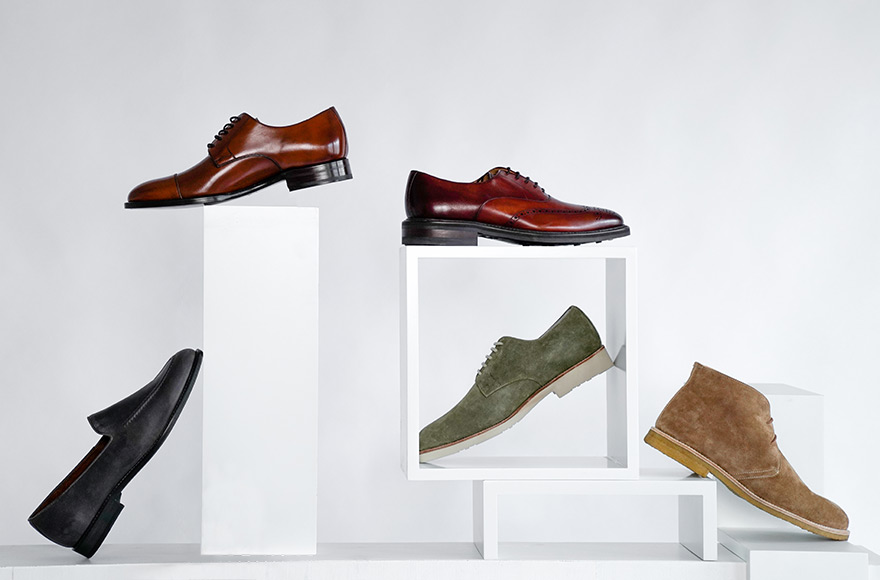Finishing the leather is the final stage of leather production. As the name would suggest, this takes place in the finishing shop. This is where leather acquires its sophisticated look and distinctive scent. Once it has been finished, the flawless leather can be used to make quality shoes.
Leather is imbued with its unmistakeable scent

Leather that comes straight from tanning is damp and quite unsightly. As a final step before the leather is ready for the men's shoe production process, it is brought into the finishing shop. This is where the final stages of processing take place—these include drying and dyeing the leather, restoring its pliability, and further refining touches.
Various fats and oils lend the leather shine and elasticity
The first stage of finishing the leather involves drastically reducing its moisture content. This is achieved mechanically, with the use of a sammying machine that presses water out of the leather. The half-dried hides are then deposited in a barrel full of warm air for greasing. Various oils and fats are added in rotation. This increases the pliability, elasticity, tensile strength, and stretchability of the leather. At this stage the leather is also imbued with its distinctive scent, which arises from the fats and oils with which it is treated. The cuts of leather that will go on to make shoe uppers receive extra treatment. While leather intended for soles is placed in fresh air or in moderate-temperature rooms for drying, the upper leather is seamed. In other words, it is planed to a perfectly even thickness by a seaming machine.
Although there are many different tanning methods, when it comes to premium low-rise leather shoes there are only three that come into question: oak-pit tanning, vegetable tanning, and chrome tanning. After 48 hours of storage, chrome-tanned upper leather is submitted to neutralization. This deacidification process involves brewing the leather in a barrel to remove free acids and neutral salts. This stage of finishing the leather is important for the end-stage consumer, as it ensures that the leather will not irritate skin.
The leather is either fully-dyed or aniline dyed
The upper leather is dyed before it is dried. There are two options when it comes dyeing: full dyeing or aniline dyeing. Full dyeing entails placing the leather in giant barrels and leaving it to soak in organic or inorganic dye until the dye has fully permeated all of the leather fibres. Aniline dyeing, on the other hand, only dyes the leather on one side, as a spray pistol is used to apply the dye to the upper layer of the leather.

Glazing is the last stage of finishing the leather before it is dried. This entails lacquering a glaze onto the leather that will be used to make the shaft of the shoe. The glaze lends the leather a glossy look while protecting it from external damage.
The final stage of finishing the leather is drying. The upper leather is fixed between metal plates or under heat radiators and dried at 40 to 60 degrees Celsius. After the leather has been kept in this state for 1 to 2 days, a heavy hand-held iron or a press heated to 90 degrees is used to iron it out. Finally, the end product is complete: a flawless cut of leather that started out as a raw hide.
Additional steps in leather production
Types of Leather
Handmade leather Shoes at Shoepassion.com
Classic Style Shoes for men & women ★ Various styles & designs ★ High quality ★ Fair & sustainably produced in Europe ★ Exellent value for money ★ Many models on sale













